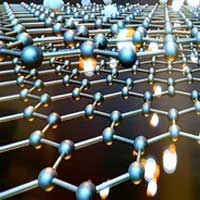 Scientists have developed a method to control the binding energies of excitons in a two-dimensional (2D) semiconductor for advanced photonic and optoelectronic applications.
Scientists have developed a method to control the binding energies of excitons in a two-dimensional (2D) semiconductor for advanced photonic and optoelectronic applications.
Tuesday, August 13, 2019
Control of excitons in a 2D semiconductor
 Scientists have developed a method to control the binding energies of excitons in a two-dimensional (2D) semiconductor for advanced photonic and optoelectronic applications.
Scientists have developed a method to control the binding energies of excitons in a two-dimensional (2D) semiconductor for advanced photonic and optoelectronic applications.
Scientists learn how to safely excrete nanomedicine
 Scientists have identified a new mechanism for removing magnetic nanoparticles through the kidneys, which will help to create more effective and safe drugs.
Scientists have identified a new mechanism for removing magnetic nanoparticles through the kidneys, which will help to create more effective and safe drugs.
High temperature thermal shocks increase stability of single-atom catalysts
 A research team developed a high temperature shockwave catalysis method - reaching up to 3000K, which is half the temperature of the sun - intended to 'anchor' single atoms onto the substrate, offering superior thermal stability.
A research team developed a high temperature shockwave catalysis method - reaching up to 3000K, which is half the temperature of the sun - intended to 'anchor' single atoms onto the substrate, offering superior thermal stability.
Graphene paves the way for novel product enabling industrial users
 Researchers demonstrate the long-term stability of the epigraphene quantum Hall chip, which represents a key step towards enabling end-users to maintain their own resistance standards.
Researchers demonstrate the long-term stability of the epigraphene quantum Hall chip, which represents a key step towards enabling end-users to maintain their own resistance standards.
Damaged hearts rewired with carbon nanotube fibers
 Thin, flexible fibers made of carbon nanotubes have now proven able to bridge damaged heart tissues and deliver the electrical signals needed to keep those hearts beating.
Thin, flexible fibers made of carbon nanotubes have now proven able to bridge damaged heart tissues and deliver the electrical signals needed to keep those hearts beating.
How two water molecules dance together
 An international research team has gained new insights into how water molecules interact. For the first time, the researchers were able to completely observe all of the movements between the water molecules, known as intermolecular vibrations.
An international research team has gained new insights into how water molecules interact. For the first time, the researchers were able to completely observe all of the movements between the water molecules, known as intermolecular vibrations.
Subscribe to:
Posts (Atom)
